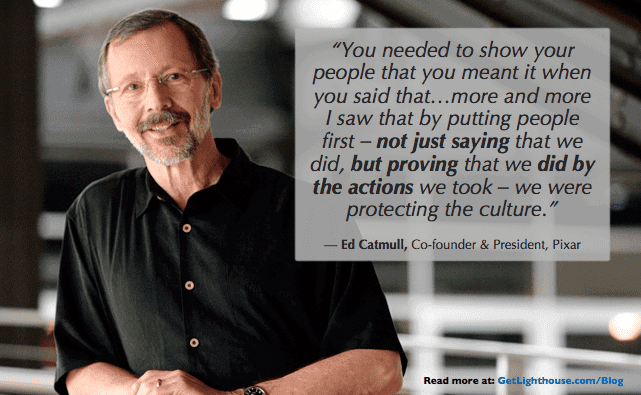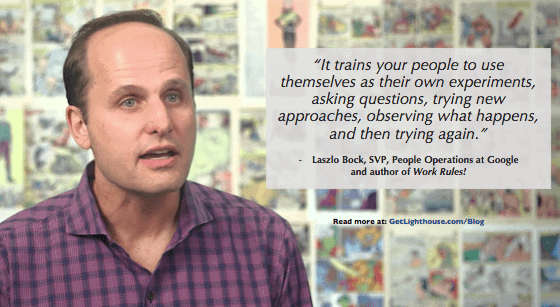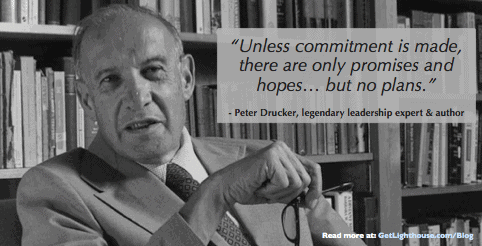I don't want to.
Do I have to?
That sounds like a waste of time.
If you're excited about having a one on one meeting with each person on your team and any of them respond in those ways, it can be pretty disappointing.
Don't let it stop you. The benefits to morale, motivation, and communication are too great to give up before you even start. If they really knew what to expect in a good one on one meeting, they'd be excited, too.
Walk in their shoes.
Rather than simply forcing the issue, consider why they feel this way. There are many reasons they could be opposed to it:
- They've never had a one on one meeting, so don't know the benefits.
- You lack enough rapport with them, so they're afraid of meeting with you alone.
- Their past one on one meetings have been status updates, which could easily be done over email.
- Their last manager never followed through on what they discussed, making talking about anything pointless.
- They've heard a horror story from a friend or colleague about a bad one on one meeting.
Take the time to find out why they're against them. It will help you overcome their concerns, whether it's convincing them why you're a different kind of manager, or teaching them what a good one on one meeting is like. It also sets the stage for good one on one meetings where you listen to them and take action on what's discussed.
How to get a skeptical team member to buy into a one on one meeting
Where there's a will, there's a way. By using a few of these approaches, you can get even the most stubborn team member to give a one on one meeting a chance.
1) Call it an experiment
Imagining a meeting you have every week forever can sound intimidating, especially if you don't think you'll enjoy it. Instead, call your new one on one meeting with them an experiment. Trying something is always easier than making a big commitment up front.
This is a tactic that Laszlo Bock, VP of People at Google, used repeatedly with initiatives there. Whether they were trying to improve their meetings, or see if a new perk was worthwhile, they called them experiments. This made it safe to cancel what wasn't working, as well as engage everyone in feedback. As Bock put it in his book about Google's culture, Work Rules!:
By calling your one on one meeting an experiment, you tap into a variety of advantages:
- They're temporary: Experiments have a defined period of time when you observe results and take further action. This helps remove the dread of a bad meeting happening forever.
- An expectation of change: Experiments are about learning and iteration. How your first one on one meeting goes is not how your 5th should go. Your meetings will get better and better.
- Opportunity for feedback: Because they are part of the experiment, it helps clearly set the expectation that they can help shape the meetings and give feedback to improve them.
Of course, the hope is that your one on one meetings are more than a temporary experiment. Done well, you will both look forward to them.
By setting the expectation that you want to iterate and learn together to improve their one on one meeting, you're much more likely to earn the buy-in of your skeptical team members. You may even learn a few things that can help improve all your other one on one meetings.
2) Show them the growth mindset
One way to group your team members is based on their mindsets; some people have a growth mindset, while others have a fixed mindset. Researcher and Stanford Psychology Professor Carol Dweck, who coined the term "Growth mindset," defines them as follows:
This mindset doesn't just apply to their own skills. A fixed mindset also limits what they believe is possible for you and the company you both work for. They will take what exists today at face value and expect that's as good as it gets. In their view, talking about anything else is a waste of time.
One on one meetings reinforce the growth mindset.
At it's heart, the mindset that nothing ever changes is exactly what a one on one meeting is meant to combat. The growth mindset can be applied to the majority of good topics for a one on one meeting:
- Feedback on how to improve processes, themselves, you as a manager, and the company or team as a whole.
- Discussions on how they can grow, learn new skills, and progress in their career.
- Getting their input on new ideas, initiatives, and future projects.
If your team buys into a growth mindset, then even if they had terrible one on one meetings in the past, they'll give you a chance to do better going forward. If you can convince them you can do better, you'll have a small window of opportunity to then prove it with them.
3) Bring good questions
The first few one on one meetings with a team will always be a little awkward. You have to push through it, and focus on the good that comes from them. Good questions are one of the best ways to make progress, and break the ice.
Former CEO and founder of Intel, Andy Grove, always emphasized the one on one meeting is your team member's meeting. One of the best ways to show that you're focused on them is to ask good questions, and listen more than you speak.
Asking good questions is also a good skill in general to learn as leader. As the CEO of SoulCycle, Melanie Whelan, puts it:
It's not always easy to spend a bunch of time asking a series of questions to probe deeper on a problem. The beauty of the one on one meeting is that you do have the time there. Don't waste it.
Bring good questions to your first one on one meeting, and give your team members things to think about for future ones. By doing so, you'll clearly demonstrate you're focused on what's important to them, and show how they benefit from these meetings.
If you're looking for ideas on good questions to ask, this list of one on one questions can help.
4) Lead by example
Whatever you want to get out of your one on one meeting with them, it starts with you. If you want to have a healthy, vibrant conversation, then your preparation is critical.
If you show up unprepared and unfocused, it's hard to expect anything different from your team. If they were already skeptical of these meetings, your lack of preparation will give them the excuse they need to justify their dislike of one on one meetings.
Actions speak louder than words.
The best way to demonstrate how much you value them and the time you invest in your one on one meeting with them is in your actions. This is a critical lesson Pixar co-founder and President, Ed Catmull, learned as they scaled the amazing culture there. He reflected on this in his book, Creativity, Inc, when he wrote:

The best ways to set a good example in your one on one meeting are to do things like:
- Take notes on the most important things you discuss.
- Review your notes from the last meeting so you can pick up where you left off, without wasting meeting time to jog your memory.
- Bring good questions to spark discussion, get their input, and learn from them.
- Ask follow up questions to fully understand their answers and anything they bring up.
- Be fully present by turning off notifications and avoiding your email during them.
By being consistent in your words and actions to show that you value these meetings and what they have to say in them, you will earn their buy in.
Your efforts, especially early on, to set a good example for the meeting will bring the positive results you need to convince your skeptics. You will also start to build a rhythm that will carry the quality of your one on one meetings going forward.
Never underestimate the power of the example you set to change your culture.
5) Keep your promises
The number one mistake well-intentioned managers make is failing to keep their promises to their team. Nothing is more destructive to a one on one meeting than not following through on your commitments.
Walk in their shoes for a moment:
Your manager finally asks you for your thoughts on an issue that's been bothering you for months. You take a chance and lay it all out for them. They appear to listen intently and ask follow up questions.
You leave the meeting excited. You feel like you were really listened to, and your answers valued. Things might just be looking up.
Then a week goes by. And another. And another. You may even have revisited the topic in subsequent one on one meetings, yet nothing has actually changed.
You realize the meetings were all talk. There's really no point in bringing up any other issues. You deflect future one on one meeting conversations to simple topics, sparing yourself the frustration of feeling ignored.
Don't be that manager.
Nothing builds resentment to you, and a distaste for their one on one meeting, than a lack of action and follow through based on what you discuss. This is why management expert and author Peter Drucker wrote in The Effective Executive:
Take the last few minutes of every one on one meeting to establish next steps.
These aren't their tasks and projects for their day to day work; they're specific actions you or they will be doing based on your discussions in the meeting of what's important to them.
By keeping your promises, and working together to address what you discuss in your one on one meetings, you will reinforce the value of them. Over time, their distaste for the meetings will melt away as they see the value in them, and how they can trust you with what's on their mind.
Unfortunately, this trust is fragile. You must be dedicated to continuing to help them make progress, and follow through on your promises, in order to keep it. In doing so, you can improve the morale and performance of your team members, and win over even your harshest skeptics.









